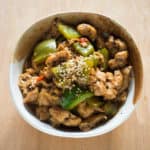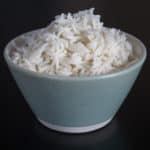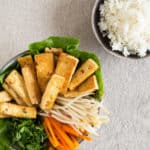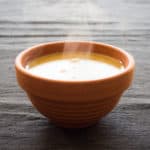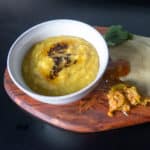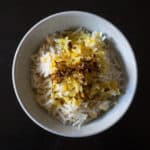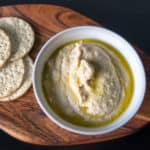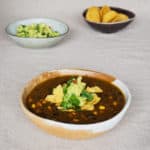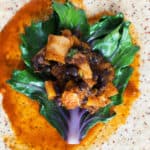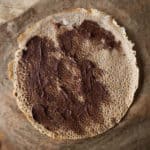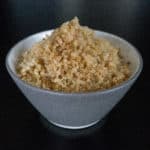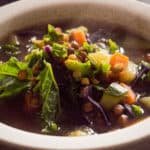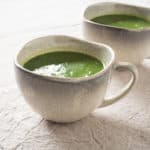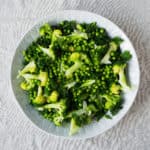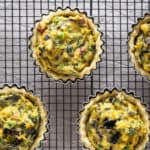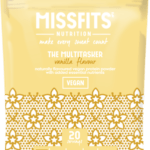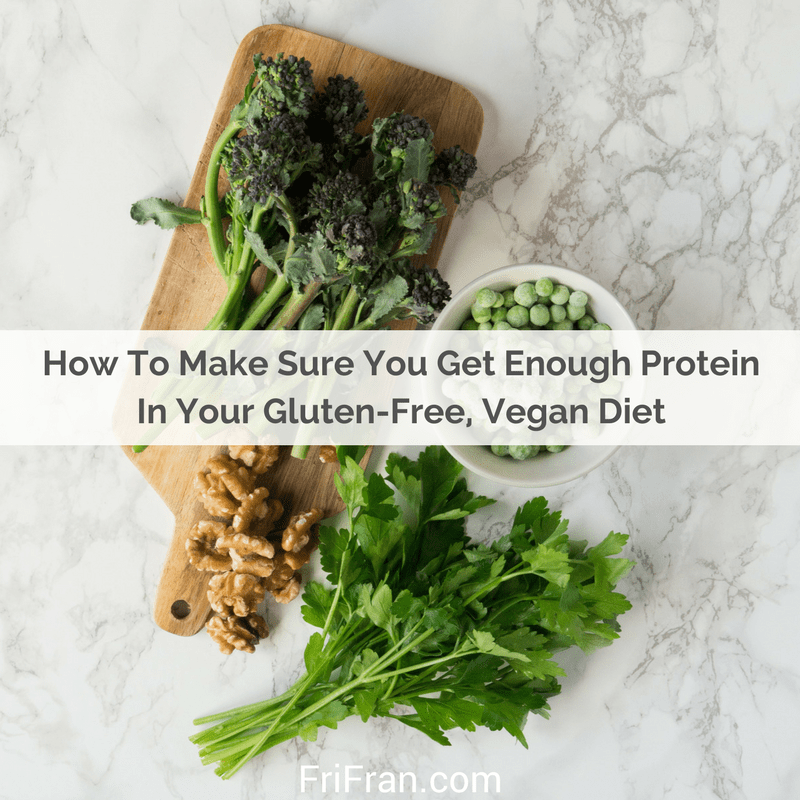
Protein is essential for a healthy body and healthy life. It is vitally important you get Enough Protein In Your Gluten-Free, Vegan Diet. Vegan (and gluten-free) or not, many of us do not get enough protein. Here’s How To Make Sure You Get Enough Protein In Your Gluten-Free, Vegan Diet.
What Is Protein And Why Do You Need It???
Protein is a vital nutrient for almost every part of your body. It keeps your skin, bones, muscles, and organs healthy and can also serve as a fuel source. The most important aspect and defining characteristic of protein, from a nutritional standpoint, is its amino acid composition. Amino acids are the building blocks of protein. Your body needs them to break down foods.
There are over 20 types of amino acid but there are only nine we cannot synthsise. The nine essential amino acids we need to obtain from our diet in order to prevent protein-energy malnutrition and illness are phenylalanine, valine, threonine, tryptophan, methionine, leucine, isoleucine, lysine, and histidine. (There is a debate as to whether there are eight or nine essential amino acids. The consensus seems to lean towards nine since histidine is not synthesized in adults.)
Vegan dietary sources of protein include grains, legumes and nuts. There very few vegan ‘complete’ source of protein and they include tofu (AKA bean curd), quinoa and amaranth. However, as we all (usually) eat more than one thing at mealtime we should not worry about ‘complete’ sources of protein and ensure a wide and varied combination of foods that will complement each other to provide all the amino acids we need.
How Much Protein Do You Need In Your Diet
In the UK the Reference Nutrient Intake (RNI) for adults is 0.75 grams of protein per kilogram of body-weight per day. This equates to approximately 56 grams per day for men and 45 grams per day for women aged 19-50 years. There is an extra requirement for growth in infants and children and for pregnant and breast feeding women.
The amount of protein we need changes during a lifetime and is dependent upon how active we are. As we get older we need more protein and if we are more active we need more protein.
Any excess protein can be used to provide energy. 1 gram of protein provides 4 kcal. However, carbohydrate, and to a lesser extent fat, should be the main sources of dietary energy. At present, protein provides around 16% of energy on average in the British diet.
Adults and children should consume two to three servings of protein every day. As a vegan it is important to make sure that different types of protein are consumed. One typical portion size equates to approximately three tablespoons of seeds or nuts. It is also important to eat different types of protein as nuts are also high in fat as well as protein.
To give you an idea of some good plant sources of protein see the below list
- Almonds 21.1 grams of protein per 100 grams
- Walnuts 14.7 grams of protein per 100 grams
- Hazelnuts 14.1 grams of protein per 100 grams
- Tofu and tempeh 8.1 grams of protein per 100 grams
- Chickpeas 8.4 grams of protein per 100 grams
- Red lentils 7.6 grams of protein per 100 grams
- Kidney beans 6.9 grams of protein per 100 grams
- Baked beans 5.2 grams of protein per 100 grams
- Rice 2.6 grams of protein per 100 grams.
However, there are lots of sources of gluten-free, plant protein across nuts and seeds, legumes, beans and pulses and gluten-free grains.
Symptoms Of Protein Deficiency
True protein deficiency is uncommon in the western world however, some people get very low amounts from their diet. The most severe form of protein deficiency is known as kwashiorkor. It most often occurs in children in developing countries where famine and imbalanced diets are common.
Too little protein can cause changes in body composition that develop over a long period of time, such as muscle wasting. Protein deficiency can affect almost all aspects of body function. As a result, it is associated with many symptoms including
- Swelling and water retention
- Loss of muscle mass
- Enlarged tummy (“pot belly”)
- Regular infections, or more serious or long-lasting infections than usual
- Red, inflamed patches of skin that darken and peel or split open
- Dry, brittle hair that falls out easily and may lose its colour
- Failure to grow in height
- Tiredness or irritability
- Ridged or cracked nails.
However, these symptoms can be associated with many other health conditions and diseases.
Concerned You’re Not Getting Enough Protein?
If you’re concerned you’re not getting enough protein in your gluten-free, vegan life you could keep a food diary; logging everything you eat and drink. You can then work out exactly how much protein you are getting on a daily, weekly and monthly basis. You should keep the diary for quite a few weeks for it to be representative of your intake.
I have a FREE Food Diary you can download. Just click the button below to sign-up and download.
How To Make Sure You Get Enough Protein In Your Gluten-Free, Vegan Diet
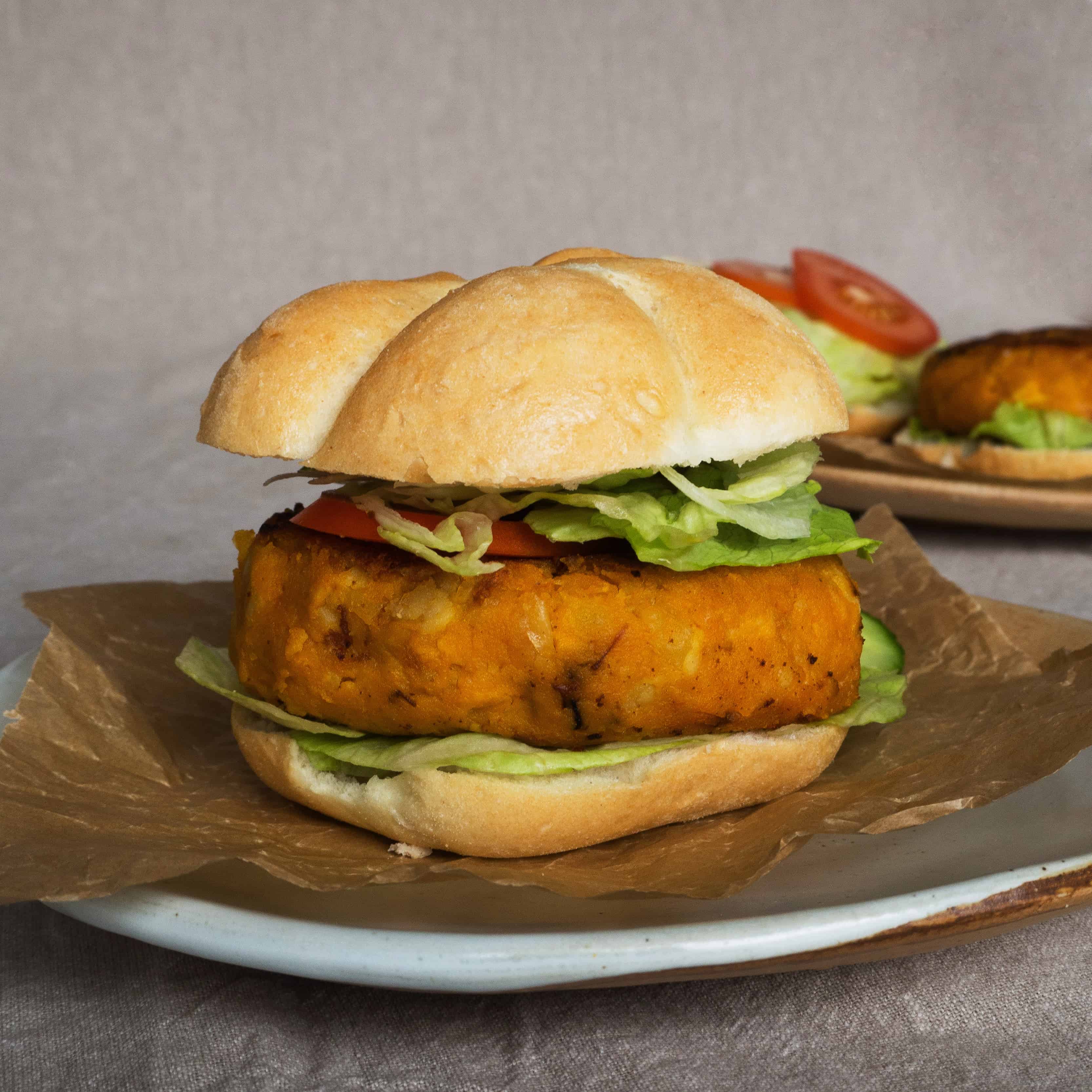
A varied and balanced diet is the best way To Make Sure You Get Enough Protein In Your Gluten-Free, Vegan Diet. Key to the right proteins is to combine several proteins in one meal e.g. one nut, one grain, one bean plus vegetables. Chickpea and Pumpkin Burger is perfect for lunch and combines chickpeas, pumpkin, vegetables and gluten-free bread. Perfetion!
How To Make Sure You Get Enough Protein In Your Gluten-Free, Vegan Diet – Tofu, Tempeh and Edamame
Tofu, tempeh and edamame are all from the soya bean. Soya beans are considered a complete of protein. Edamame are immature soybeans with a sweet and slightly grassy taste. They need to be steamed or boiled prior to consumption and can be eaten on their own or added to soups and salads (I love them steamed with salt and chilli). Tofu is kind of like cheese made form soya milk. Tempeh is made by cooking and fermenting mature soybeans prior to pressing them into a patty. They all contain iron, calcium and 10-19 grams of protein per 100 grams. Edamame are also rich in folate, vitamin K and fiber. Tempeh contains a good amount of probiotics, B vitamins and minerals such as magnesium and phosphorus.
One of my favourite recipes with tofu is Tofu and Green Peppers in Black Bean Sauce served with Perfect Plain Rice and grilled broccoli. I am also a huge fan of Lemongrass Tofu Bowl – again with the wonderful Perfect Plain Rice.
How To Make Sure You Get Enough Protein In Your Gluten-Free, Vegan Diet – Lentils
At 7.6 grams of protein per 100 grams, lentils are a great source of protein. They can be used in a huge variety of dishesfrom salads to soups to stews and dahls. In addition, lentils are rich in folate, manganese and iron.
Lentils are so flexible. Green lentils hold their texture and are perfect in salads. Red lentils are perfect for Spicy, Aromatic, Lentil Soup – perfect for cold winter lunches. Lentil Dahl is a fabulous side with any curry and served with Perfect Plain Rice and a host of greens. I am also crazy about One Pot Rice and Lentils and Make It Spicy which gives you a complete protien in one dish. The rice and lentils together work wonderfully.
How To Make Sure You Get Enough Protein In Your Gluten-Free, Vegan Diet – Beans And Legumes
Kidney, black, pinto and most other varieties of beans contain high amounts of protein per serving. Chickpeas (AKA garbanzo beans) are another legume with a high protein content. As well as being good proteins sources beans and chickpeas are also excellent sources of complex carbs, fibre, iron, folate, phosphorus, potassium, manganese and several beneficial plant compounds.
I am crazy about beans and you can make so many amazing dishes with them. The most amazing thing to do with chickpeas is of course Houmous – Garlic Free which goes with absolutely everything. Soups are always so quick and easy to make and packed full of goodness. My go-to soup is Mexican Black Bean Soup. Sometimes I kick up the spice a little! And, let’s not forget Black Bean and Kale Enchiladas. Especially great for a weekend supper.
How To Make Sure You Get Enough Protein In Your Gluten-Free, Vegan Diet – Gluten-Free Grains And Grasses
There are lots of grains and grasses that are fabulous sources of protein. I am a big fan of buckwheat (not related to wheat but a grass). And, teff an ancient grain. Teff originates from an annual grass and is an excellent source of various nutrients, including complex carbs, fiber, iron, magnesium, phosphorus and manganese. I also contain good amounts of B vitamins, zinc and selenium.
Often referred to as ancient or gluten-free grains, amaranth and quinoa don’t grow from grasses like other cereal grains do. So, technically they are condsidered pseudocereals. They can be prepared or ground into flours similar most other grains. Amaranth and quinoa are complete sources of protein, which is rare among grains and pseudocereals. Also, amaranth and quinoa are good sources of complex carbs, fiber, iron, manganese, phosphorus and magnesium. Another gluten-free ancient grain tha tis widely used in baking especially is sorghum.
Buckwheat and quinoa are super flexible and can be used in sweet and savoury food and in cooking and baking. I LOVE Buckwheat Pancakes, not just on pancake day but almost any other day! Quinoa is super versatile and once you get the cooking right (unless you like wallpaper paste!) with Perfect Quinoa the world is your oyster. How about Rainbow Winter Vegetable Soup With Quinoa? Packed full of lentils and green veg!
Gluten-free Oats are an easy and delicious way to add protein to any diet. Oats also contains good amounts of magnesium, zinc, phosphorus and folate. Although oats are not considered a complete protein, they do contain higher-quality protein than other commonly consumed grains like rice and wheat. You can use oats in a variety of recipes ranging from oatmeal to veggie burgers. They can also be ground into flour and used for baking.
Wild rice (which is actually not a rice but a grass) contains approximately 1.5 times as much protein as long-grain rice varieties, including brown rice and basmati plus a good amount of fiber, manganese, magnesium, copper, phosphorus and B vitamins. Unlike white rice, wild rice is not stripped of its bran. This is great from a nutritional perspective, as bran contains fibre and plenty of vitamins and minerals.
How To Make Sure You Get Enough Protein In Your Gluten-Free, Vegan Diet – Green Peas
The green peas often relegated to a side dish are good sources of protein. Plus, a serving of green peas covers more than 25% of your daily fibre, vitamin A, C, K, thiamine, folate and manganese requirements. Green peas are also a good source of iron, magnesium, phosphorus, zinc, copper and several other B vitamins.
I am crazy about peas (when they are in season I eat them raw from the pod) and when they are out of season I am equally passionate about frozen peas. One of my favourite pea recipes is Lettuce and Pea Soup. Light, fresh and utterly wonderful. If you want to go for a full on salad I can wholeheartedly recommend Broccoli, Kale and Pea Salad. A very wonderful side for a hearty Sunday lunch. For something a little more sophisticated I love Chard, Courgette and Pea Tart.
How To Make Sure You Get Enough Protein In Your Gluten-Free, Vegan Diet – Nuts And Seeds
Nuts, seeds and their derived products are great sources of protein. Nuts and seeds are also great sources of fibre and healthy fats, in addition to iron, calcium, magnesium, selenium, phosphorus, vitamin E and certain B vitamins. They also contain antioxidants, among other beneficial plant compounds. When choosing which nuts and seeds to buy, keep in mind that blanching and roasting may reduce the nutrients in nuts.
Sunflower seeds, pumpkins seeds, chia seeds, sesame seeds, flax seeds, maca powder and all the other small protein rich seeds also contain good (and varying) amounts of iron, calcium, selenium and magnesium, as well as omega-3 fatty acids, antioxidants and various other beneficial plant compounds. Theses seeds are incredibly versatile and can be used in smoothies, baking and sprinkled on top of everything.
I use pumpkins seeds in lots of thing and never throw away the seeds from any squash or pumpkin (they are the best part). They are perfect in my high protein, low sugar Crunchy Cranberry and Cinnamon Granola which is how I start most days. I add lots of seeds to Beetroot and Millet Mega-Salad which is great whatever the weather. Chia seeds and nuts form the backbone of Raspberry and Hazelnut Overnight Oats which if I’m out and about all day is in my bag.
How To Make Sure You Get Enough Protein In Your Gluten-Free, Vegan Diet – Soya Milk
Plant milk that’s made from soya beans and fortified with vitamins and minerals is a great source of protein. It’s also an excellent source of calcium, vitamin D and vitamin B12. Soya milk is found in most supermarkets. It’s an incredibly versatile product that can be consumed on its own or in a variety of cooking and baking recipes. It is a good idea to opt for unsweetened varieties to keep the amount of added sugars to a minimum.
My favourite fortified plant milk is essential Waitrose longlife unsweetened soya drink*.
How To Make Sure You Get Enough Protein In Your Gluten-Free, Vegan Diet – Protein-Rich Fruits and Vegetables
All fruits and vegetables contain protein, but the amounts are usually small. However, some contain more than others. Vegetables with the most protein include broccoli, spinach, asparagus, artichokes, potatoes, sweet potatoes and Brussels sprouts. They contain about 2-3 grams of protein per 100 grams. Although technically a grain, sweet corn is a common food that contains about as much protein as these high-protein vegetables. Fresh fruits generally have a lower protein content than vegetables. Those containing the most include include guava, cherimoyas, mulberries, blackberries, nectarines and bananas, which have about 2 grams of protein per 100 grams.
How To Make Sure You Get Enough Protein In Your Gluten-Free, Vegan Diet – Protein Powder
Sometimes we need a little extra help with protein. If you have been ill or are doing a large amount of exercise. Gluten-free vegan protein powders can help you build yourself back up after illness or stay healthy.
These are a few options I have tried. Naturya Hemp Protein Powder* is just hemp, nothing else, no sweetener, no flavouring no messing. You can do with this what you like! I have to warn you it can taste a little like… the bottom of a river bed. It is a bit of an acquired taste but I like the simplicity of it. Now, to the other extreme and Vega Clean Protein Chocolate which is a classic protein shake powder with sweeteners. If you fancy something vanilla try MissFits Pea Protein Vanilla Sachets.
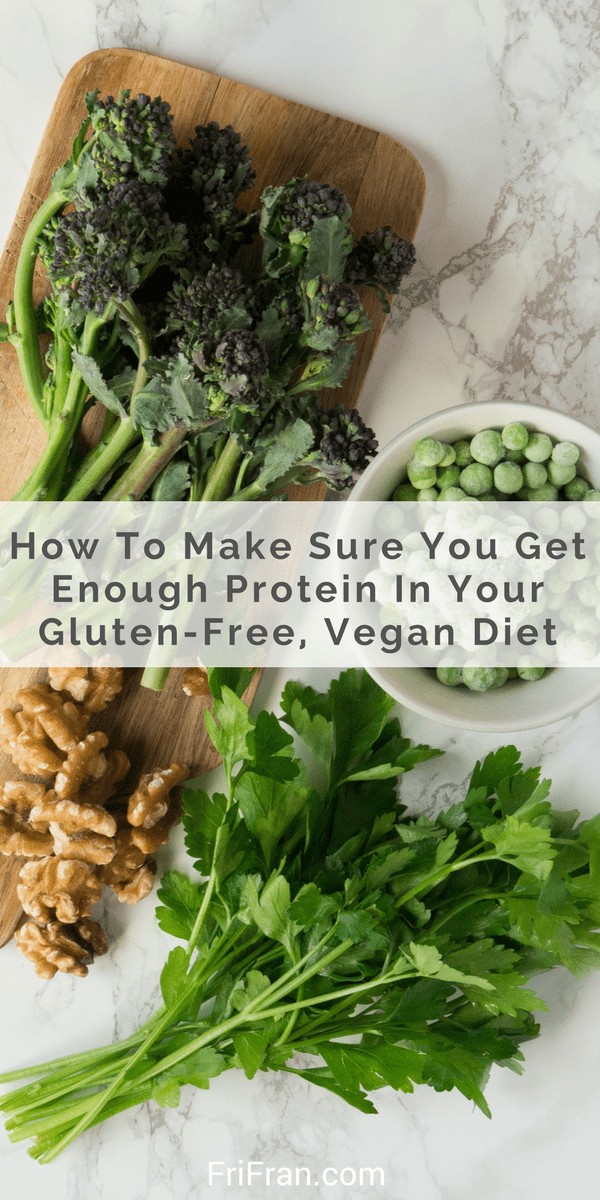
* Affiliate link.
How Do You Make Sure You Get Enough Protein In Your Gluten-Free, Vegan Diet?
There are lots of tips and tricks to Get Enough Protein In Your Gluten-Free, Vegan Diet – this is my tiny selection of thoughts…
If you have any questions or concerns about your health speak to your GP or a dietitian. Keeping a food diary for a few weeks will give you a solid foundation for discussions with medical professionals.
What do you do to make sure you Get Enough Protein In Your Gluten-Free, Vegan Diet? Drop a comment below or ping me on social media! 🙂
